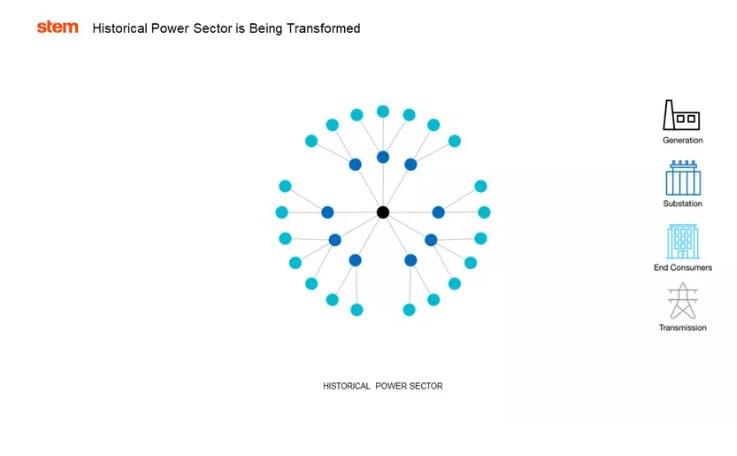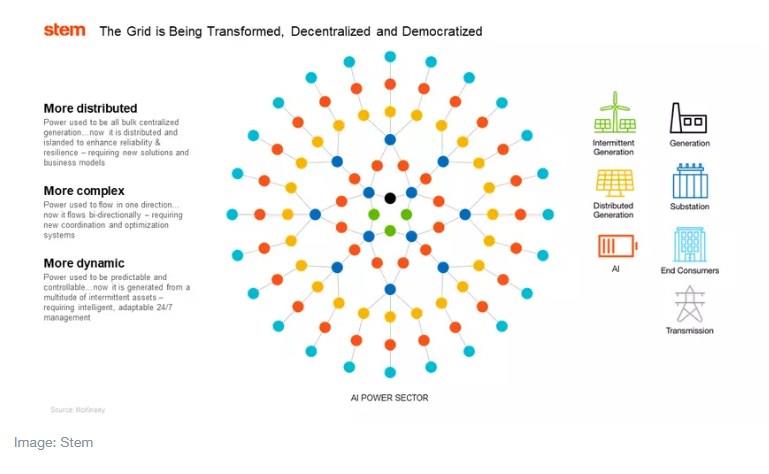by John Carrington*
The world’s energy systems are changing. Driven by strong demand for clean energy and mounting impacts from climate-driven extreme weather, entities around the world are setting ambitious goals to reduce emissions from the fossil fuels that have powered economic growth for over a century.
The majority of emissions come from three sectors: electricity generation, transportation and buildings. Steep increases in renewables will reduce electric sector emissions and power new loads from transportation and buildings. But the grid must undergo profound changes for this to occur.
How will the grid decarbonise?
Electricity will drive global decarbonisation. The future grid must first be clean. No feasible, affordable path exists to replace gasoline with a carbon-free liquid fuel for vehicles, nor natural gas with a carbon-free alternative for cooking and heating. No path, that is, apart from electrifying vehicles and buildings, which is recognised as the lowest-cost, lowest-risk decarbonisation strategy.

Clean electricity will drive emissions reductions across the economy. Some renewable energy will still come from power plants, but those can be difficult to build, as can be the long transmission lines that bring power to users. By contrast, local renewables can provide clean, affordable power directly to customers more easily, making it decentralised.
The future grid will address key challenges: power outages and economic losses from extreme weather. With these events becoming more frequent and severe, maintaining the grid’s century-old, centralised architecture is a costly proposition. It must be resilient.
With renewables, growth and variation in electricity services as well as significant unpredictability in supply and demand, the grid must become dynamic. And in order for that grid to function, it must be smart.
That’s where artificial intelligence (AI) comes in.
How AI will transform and ’clean up’ the grid
On an increasingly complex future grid, the number of decisions will far exceed human and conventional digital automation capabilities. There’s already automation on today’s grid, but automation can only go so far. Fully enabling a future grid and maximising its benefits will require AI. Ultimately, AI will transform the grid from an aging supplier of commodity electricity to an intelligent “system of systems” that produces optimised outcomes.

There are three main sectors where AI will drive decarbonisation the most – electricity, buildings and transportation.
Electricity
Powering a decarbonised grid will involve not just replacing fossil-fuelled plants with clean renewables, but also roughly tripling the amount of electricity that’s delivered. Because the future grid will be decentralised, the sources of energy supply will increase by an order of magnitude – from tens of thousands of plants today to a network of millions of resources. And because most of these resources will be renewable, weather will profoundly affect electricity supply. Collectively, these changes will transform the structure and operation of the grid.
Leveraging years’ or decades’ worth of data, AI will generate forecasts for key factors including weather, renewable energy generation, customer demand and market prices. These forecasts, and learning from predicted vs. actual outcomes, will enable AI to optimise every resource on the grid for every moment of the day. And its real-time control capabilities will execute on forecasts and correct for anomalies, ultimately down to the sub-second level.
Buildings
Electrifying buildings means powering energy services such as space heating, cooking and industrial processes with electricity rather than fossil fuels. As decarbonisation efforts intensify, the amount of clean electricity buildings consume will rise dramatically, as will the amount of it they produce on-site.
More importantly, the role of buildings on a decarbonised grid will change: instead of a passive, predictable consumer of electricity, buildings will become an integrated, dynamic resource and active market participant. Just as important as the selling of clean, locally generated electricity into markets will be the selling of grid services, with buildings’ “flexible loads” helping to maintain a balanced, reliable grid. AI-enabled buildings will allow users to match consumption with on-site and off-site renewable generation to achieve “24/7 clean energy” objectives.
Transportation
Electrifying vehicles will transform the energy landscape as much as anything we’ve considered so far. In place of existing gasoline supply infrastructure will be EV charging stations - and far more of them: from former filling stations, to office builds and homes.
AI will be crucial to powering EVs with zero-emissions electricity and maximising their value to consumers and society. Its benefit will be felt as the number of EVs and their impact on the grid become increasingly material and optimised.
Energy storage completes the picture
Storage will be as important as renewables and AI in achieving global decarbonisation, solving the challenge of intermittent renewable generation so that clean energy is available when it’s needed. Storage will enable buildings and transportation to act as fully flexible grid resources, making up for shortfalls in on-site generation and providing grid services when devices can’t.
Building a massive grid that instantaneously balances supply and demand while providing power has been called the greatest engineering feat of the 20th century. Powering a fully decarbonised economy with AI-driven renewables and energy storage may prove to be the greatest achievement of the 21st.
How do we get there?
Today’s markets bear very little resemblance to those that will underpin a decarbonised grid. The range and value of AI-enabled energy services haven’t been contemplated in many jurisdictions, let alone the means of incorporating and compensating them in real time. Electricity markets must transform completely.
Every barrier that prevents a customer from buying or selling the clean energy services they want, and that the grid needs, at any time, must be removed. In its place must be efficient, transparent market mechanisms which AI will animate, allowing customers and utilities to realise their desired outcomes with or without human involvement.
Since policy drives markets, policymakers must instigate needed changes over the next decade to enable full electric sector decarbonisation by 2035, a pillar of many long-term emissions reduction strategies.
AI technology itself must continue to evolve. But the biggest barrier isn’t technical – it’s regulatory. Action towards mid-century decarbonisation must occur. The costs and risks of inaction increase every moment and stand between us and the much-needed decarbonised grid of the future.
*Chief Executive Officer, Stem
**first published in: www.weforum.org




 By: N. Peter Kramer
By: N. Peter Kramer

